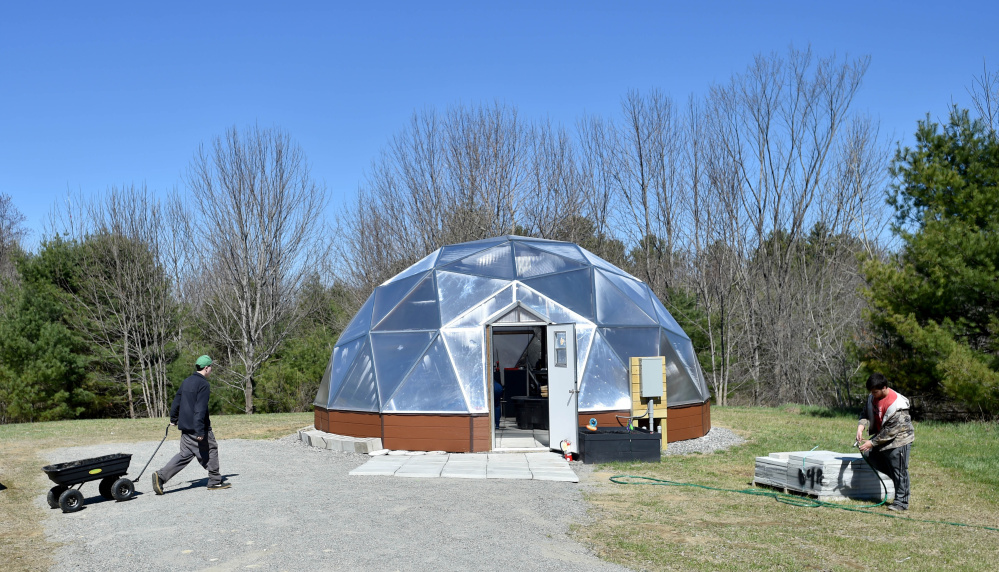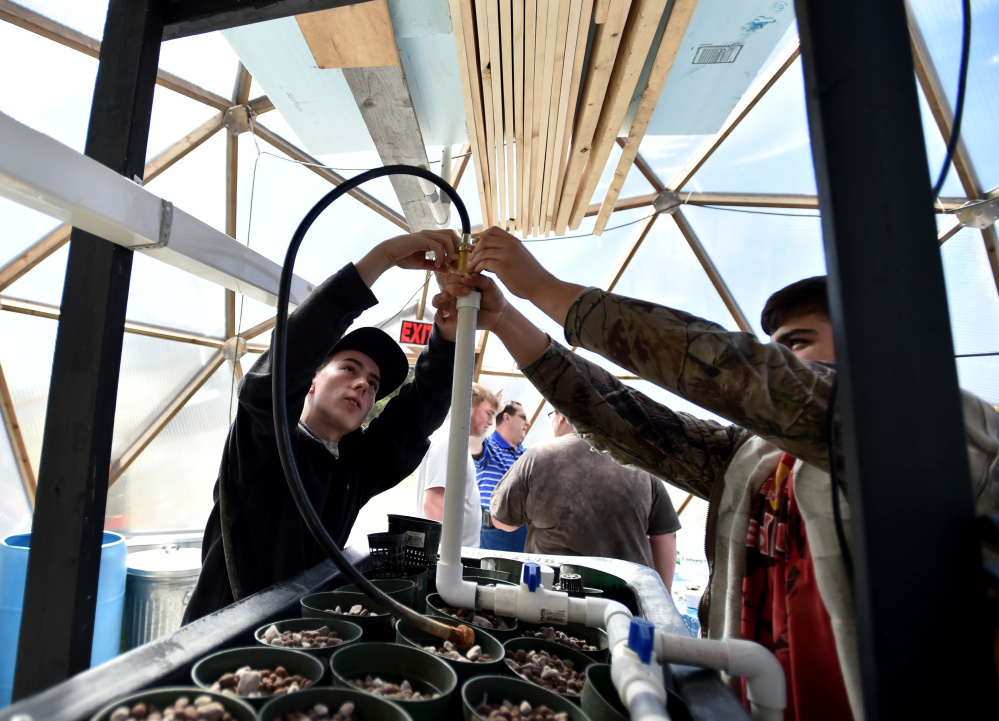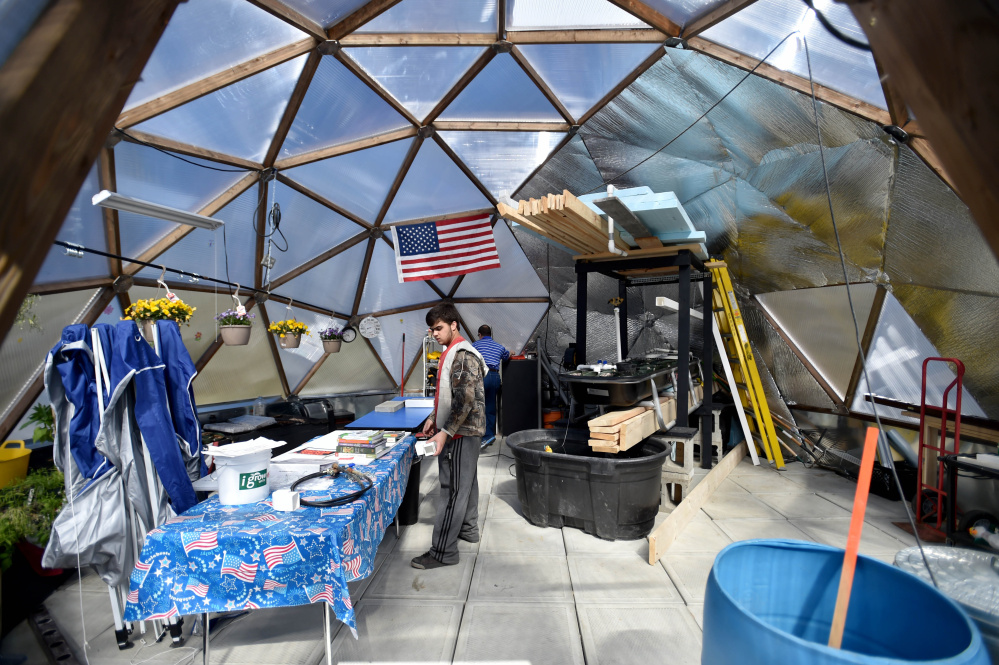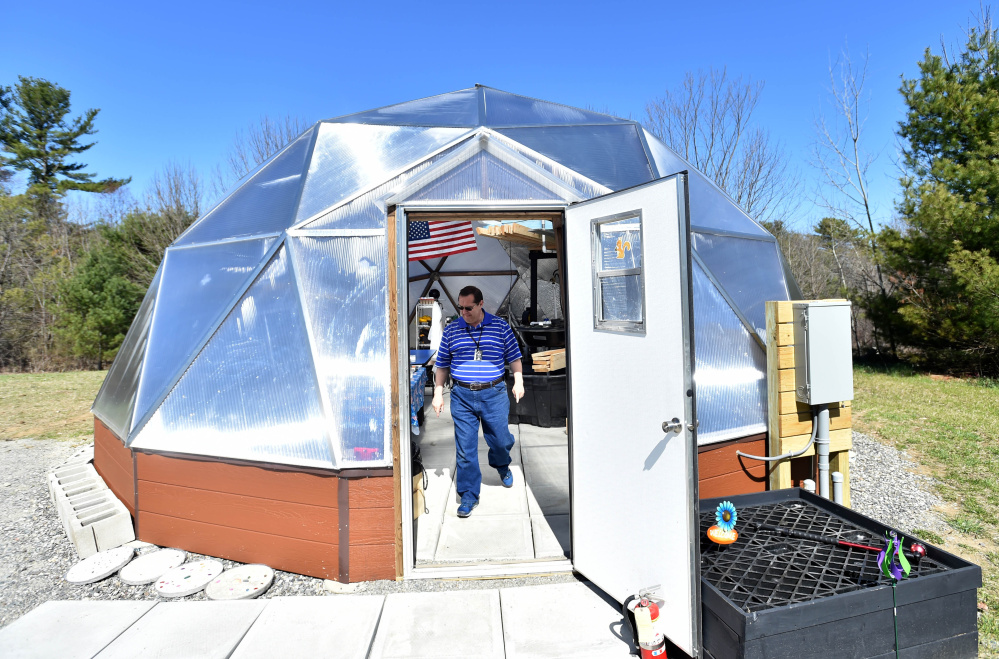SKOWHEGAN — The sun was shining as a trio of young men shoveled dirt into a wheelbarrow Friday morning and hauled it to planters outside a glistening opaque dome on the campus of the Marti Stevens Learning Center.
“Just pack it down. We’ll have to add more anyway,” Barry Sites, the director of the alternative school in School Administrative District 54, told the three students as they filled the planters.
The project is typical of the way students at the learning center start their day – with a two-hour block of project-based learning – but it also represents a new facet of life at the school.
With the help of a grant worth more than $60,000, the school is putting finishing touches on a geodesic dome greenhouse, a state-of-the-art growing center where the students plan to grow flowers and vegetables and house an aquaponics system.
The addition of the greenhouse and the development of about 1.5 miles of new hiking and walking trails at the Marti Stevens campus are the most recent developments in the school’s sustainable agriculture program, which started in 2014 with the help of an AmeriCorps volunteer.
The center, named for founder and social activist Marti Stevens, who died in 1993, is home to alternative education services for 52 students in School Administrative District 54. The district comprises the towns of Skowhegan, Norridgewock, Canaan, Smithfield, Cornville and Mercer.
“We’re getting back to our roots here,” said Sites, as he surveyed the former farmland where the campus is now located. “Somerset County is an agricultural area, and we’re bringing that back. There’s a rebirth of agriculture in the area, especially with the whole farm-to-table idea.”
Three years ago the school decided to build a more hands-on curriculum in an effort to move toward proficiency-based learning standards, Sites said. It added livestock and refurbished an old school bus – affectionately labeled “the bunny bus” – and built an aquaponics system, which creates a relationship between fish and plants to produce food.
School officials hoped to build a greenhouse but were deterred by the cost.
“It just wasn’t economical. The kids were really bummed out,” Sites said.
Then in 2014 the school learned that it had been chosen to receive a State Farm insurance company Youth Advisory Board grant worth $61,389 – enough to cover the full cost of the geodesic greenhouse, which Sites said was chosen because it has a longer expected lifetime than a traditional greenhouse.
The students began assembling the project themselves last year and are completing work on it now. They hope to grow flowers and vegetables that will allow them to add another dimension to their project-based learning with a farm stand that will teach them lessons in financial management.
“We’re basically learning how to plant things,” said 16-year-old Barry Robinson of Skowhegan, who has been working on the greenhouse for the last two years. “Every morning we come out here, and we do something with the dome.”
Learning how to grow plants also contains several other lessons, said Sites, noting that the greenhouse and the aquaponics system inside are also used to teach the students how to test pH levels and to test for ammonia and nitrates.
“Their grade comes from how well they care for their plants,” he said. “It’s real. It’s based on the everyday needs of the project.”
“It’s pretty interesting,” said Jacob Corson, 19, a senior. “Trying to figure out the whole (aquaponics and greenhouse) system is a challenge.”
Send questions/comments to the editors.












Comments are no longer available on this story